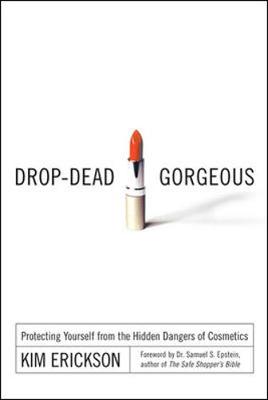
Our preoccupation with beauty is a fascination that the cosmetic industry has parlayed into a 28 billion dollar a year industry. They offer products that claim to deliver youthful skin and luxurious hair, yet they fail to mention the scores of potential irritants, carcinogens, neurotoxins, and hormone disrupters used to manufacture these products. Without knowing it, many men and women are exposing themselves to more than 200 synthetic chemicals each and every day. While most of us assume that labs full of researchers in white coats protect us from the potentially dangerous cosmetic ingredients, the truth is that cosmetics are not required to gain pre-market approval before they are sold to consumers. In fact, the FDA is powerless to compel manufacturers to conduct safety testing. Drop Dead Gorgeous exposes the dangers of many of the products currently available and the cosmetic industry's lies and glaring omissions. She also explains why the FDA is powerless to protect consumers and offers easy and typically inexpensive alternatives.
This is a US publication, looking mostly at US products and companies, some of which are worldwide (though some of the formulations may change from country to country). Some of the language used is quite general (may, might and other words like that) there are no guarantees in this world when it comes to chemicals and if you have a better idea of what you're using on yourself you might have a better hope of understanding what's happening if things go wrong. If you're trying to be healthier and eat healthier maybe you should also look at what you're putting on the outside of your body and ask if you're absorbing something that won't help.
This is one of the books to use to guide you, it goes through various body parts (skin, hair, face etc.) and looks at the products people generally use and then suggests home-made alternatives. After that she suggests some commercial alternatives. The edition I was looking at dated to 2002, in the intervening years there are probably some more and less to that list, but it's a good start, particularly if you're in America.
The formulas make me want to get brewing, so it can't be all bad. Seeing as how I've been having skin issues recently it's also timely, as this allows me to determine what I'm putting on my skin.
Overall, possibly a little overparanoid but good food for thought.
Reading updates
-
Started reading
-
17 June, 2009:
Finished reading
-
17 June, 2009:
Reviewed
